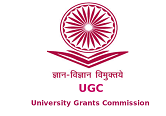Post-Implantation Alterations in the Surface Topography of Different Implant Systems – A Cross Sectional Pilot Study
DOI:
https://doi.org/10.55995/j-cpi.2021001Abstract
Background: Micro-surface treatment is claimed to improve cell adhesion and enhance osseointegration. The retainability of the micro-surface treatment post-implantation needs to be assessed.
Purpose: The purpose of the study was to estimate the post-implantation changes in the surface topography of different implant surfaces created by the subtractive methods.Material and Methods: Twelve patients aged between 22-45 years participated in the study. 3 different implant systems; MTX surface with hydroxyapatite grit blasting, Microgrip with sandblasting and DPS surface with alumina grit blasting were utilized. The test implants were placed with a torque of 35-40 N and retrieved immediately after placement, followed by placement of a larger diameter implant for delayed loading protocol. The surface topography of the retrieved implant surfaces was examined using a scanning electron microscope (SEM)(stereo scan 440) at high magnification (2000 nm).
Results: The post-implantation SEM image exhibited altered surface topography that varied between the different implant surface textures.
Conclusions: The surface topography varied between different implants based on the types of surface treatments. The sandblasting with acid etchin had better retention of surface topography post-implantation when compared to the other surface treatments.Clinical implication: Torquing of an implant affects the surface topography and it varied for different implant surface treatments without affecting the osseointegration.
Downloads
Published
How to Cite
Issue
Section
License
The entire contents of the Journal of Clinical Prosthodontics and Implantology are protected under Indian and international copyrights. The Journal, however, grants to all users a free, irrevocable, worldwide, perpetual right of access to, and a license to copy, use, distribute, perform and display the work publicly and to make and distribute derivative works in any digital medium for any reasonable non-commercial purpose, subject to proper attribution of authorship and ownership of the rights.






